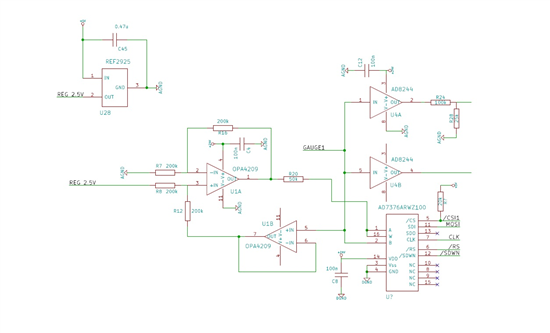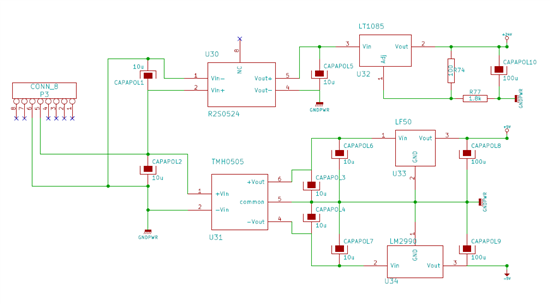Hello,
I'm using quad OPA4209 as current sources, as in the schematics below. I have two same channels, using the same voltage reference REF2925. The digital potentiometer is set to 75 kOhms, making the total resistance between PIN1 and PIN5 of 125 kOhms. The potential between these PIns is set by the REF2925, and is equal to 2.5V, allowing 20 µA flowing throw a resistive load (100 kOhms for example) plugged between GAUGE1 and GND. So, the potential of GAUGE1 is: 20µA*100kOhms = 2V.
Despite goods voltages levels, the OPA4209 heat very quickly... I don't find the issue...
I've already try to short the input of potentimeter, but the heat problem still happen...
Thanks for help!
Arnaud



